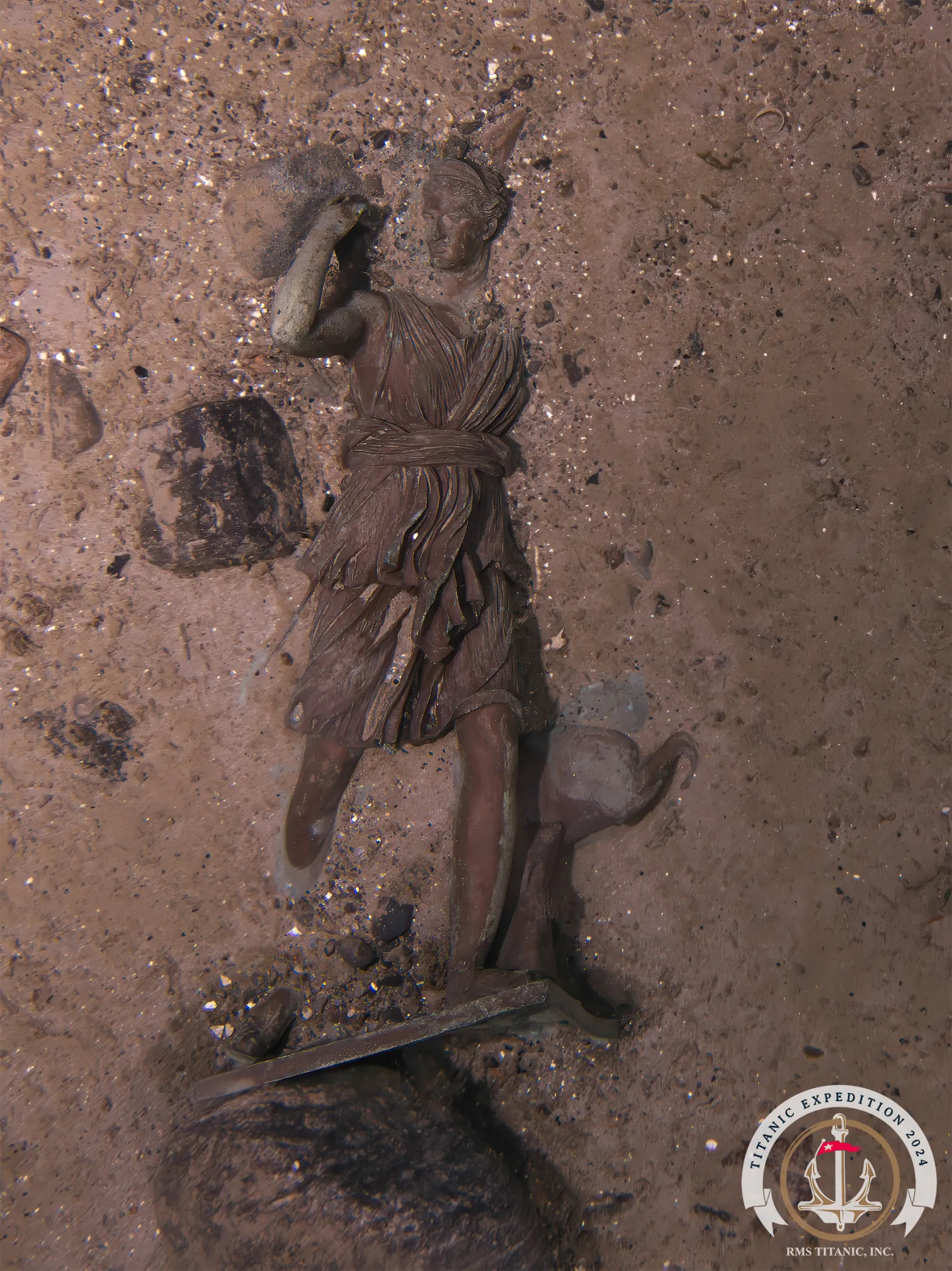During its first Titanic expedition in more than ten years, a Georgia-based company with salvage rights to the historic shipwreck discovered a long-lost statue while documenting the ship’s natural deterioration this summer. The statue, a two-foot-tall (61 cm) ornate bronze replica of the Roman marble “Diana of Versailles” displayed at the Musée du Louvre in Paris, was last seen by an explorer in 1986 and was thought to be lost forever until RMS Titanic Inc. researchers found it on the last day of the expedition.
This statue of Diana, whose creator and origin remain unknown, was once located in the Titanic’s First Class Lounge, which was severed as the ship sank. It then fell into a field of debris on the ocean floor, where it remained unnoticed for over seventy years until 1985, when oceanographers first discovered the wreck. Robert Ballard, one of the oceanographers, returned the following year to photograph the bronze statue.
Since 1987, RMS Titanic Inc. has conducted nine expeditions to the Titanic wreck, recovering thousands of artifacts and pieces of equipment while also exploring and documenting the ship’s natural deterioration. The second-to-last expedition, held in 2010, provided the most advanced images and digital representations of the wreckage available at that time.
The three-week expedition that started this summer on July 12, involved remote-controlled submersibles navigating the wreck and nearby debris fields to locate more artifacts for future recovery and to thoroughly document alterations in the ship’s structure. This mission followed the Titan submersible implosion in June 2023, which resulted in the death of RMS Titanic Inc.’s director of underwater research, Paul-Henri Nargeolet.
Finding the statue of Diana was a major goal for the RMS Titanic Inc. team, but researcher James Penca described the task as akin to “finding a needle in a haystack” situated 2.5 miles underwater in complete darkness. Penca shared that the team managed to discover and photograph the statue during the final hour of the expedition, with hopes of recovering it soon for public enjoyment—quite a contrast to when it was only seen by the Titanic’s first-class passengers.
While locating Diana was a significant achievement, the ongoing deterioration of the wreck was a sobering reality. The expedition captured two million high-quality photos, revealing notable changes such as the loss of a 15-foot section of railing from the ship’s iconic bow, which had been intact as of 2022.
On the plus side, the continued decay might make it easier to access and map previously unexplored parts of the wreck. RMS Titanic Inc. is now analyzing the data to identify historically important and vulnerable artifacts to prioritize for recovery, as they continue their efforts to preserve the wreck and honor its victims for future scientific and cultural study.










